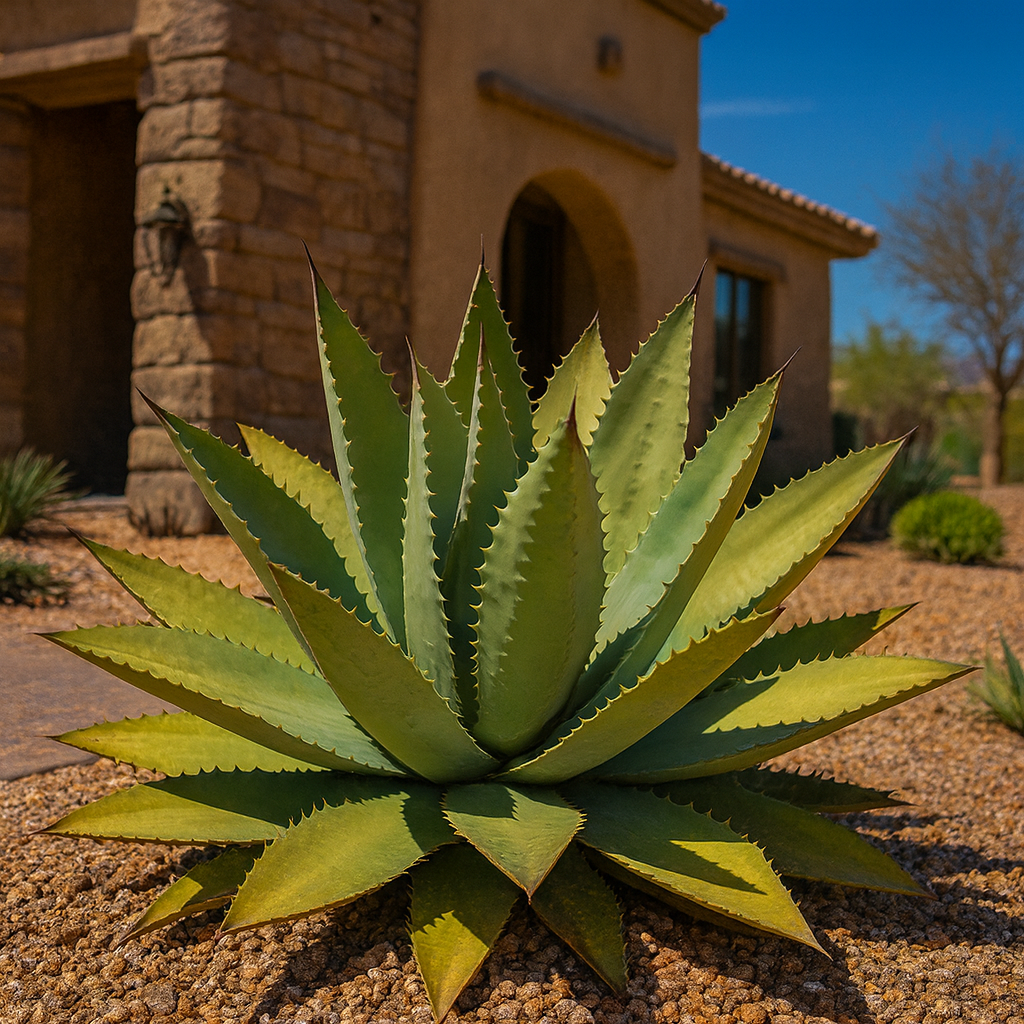My Store
Saw Leaf Agave
Saw Leaf Agave
Couldn't load pickup availability
Plant Type: perennial, succulent
Plant Height: 2–3 feet
Spread: 3–4 feet
Flower Color: yellow-green
Sun Exposure: Full sun, Partial Shade
Saw Leaf Agave / Agave xylonacantha: Textured Elegance with Distinctive Serrated Beauty
Agave xylonacantha, commonly known as the Saw Leaf Agave, is a striking mid-sized agave prized for its deeply serrated leaf edges and rich color contrast. This dramatic species combines bold structure with manageable size, making it a perfect choice for Arizona landscapes that emphasize form, texture, and rugged desert beauty.
Key Features of Saw Leaf Agave
The Saw Leaf Agave forms a spreading rosette of narrow, dark green to blue-green leaves edged with prominent white to light gray teeth, giving the plant its “saw-like” appearance. Each leaf curves slightly outward, showcasing its sculptural edges. While the leaf margins are pronounced, they aren’t overly sharp, and the plant’s overall look is more artistic than aggressive. After several years of growth, it produces a tall, slender flower stalk reaching up to 12 feet, adorned with clusters of yellow-green blooms before completing its life cycle and leaving behind basal offsets.
Growing and Care Tips
Agave xylonacantha thrives in full sun but can tolerate partial shade, especially during the hottest parts of summer. It prefers well-drained, sandy or rocky soil and is highly drought-tolerant once established. During the establishment phase, water deeply every 10–12 days to promote strong root development, but reduce watering once the plant is mature. Fertilization is rarely necessary, though a small application of cactus fertilizer in spring can enhance vigor. The Saw Leaf Agave is tolerant of heat and arid conditions but should be protected from prolonged frost or standing water.
Landscaping Uses
The Saw Leaf Agave is ideal for xeriscape designs, rock gardens, and modern desert landscapes. It’s particularly attractive in groupings or as an accent plant where its serrated edges and defined rosette structure can be appreciated up close. It pairs beautifully with softer plants like desert spoon, golden barrel cactus, or ornamental grasses, adding texture and rhythm to the landscape design.
Summary
Agave xylonacantha delivers a perfect balance of structure and artistry. Its unique serrated leaves and sculptural form bring sophistication to any Arizona landscape. Durable, low-maintenance, and visually captivating, this agave offers lasting impact in gardens that value both form and function.
Three Timbers Installation Guide (Feel Free to Follow):
Saw Leaf Agave Planting Guide:
Location: Full sun to partial shade (at least 6 hours of direct sunlight daily; light afternoon shade can help maintain color during extreme heat)
Soil: Well-drained, sandy or rocky soil is essential to prevent root and crown rot
Spacing: Space plants 3–4 feet apart to allow full rosette development and airflow
Planting Depth: Set the crown level with or slightly above the soil line to ensure proper drainage
Support: No staking required; naturally stable rosette
Watering Guide:
Watering After Planting: Water thoroughly after planting to settle soil and remove air pockets. Allow the soil to dry before watering again. During the first 2–3 months, water lightly every 10–12 days depending on temperature and drainage.
When is the Plant Established? Saw Leaf Agave is considered established after approximately 6–9 months when roots have fully anchored and new leaf growth is visible.
Watering Once Established: Once established, water sparingly. In summer, water every 3–4 weeks during prolonged dry spells. In cooler months, watering is typically unnecessary unless the soil is completely dry.
Drip Irrigation Setup: Place emitters 10–12 inches from the rosette center to keep the base dry. Use low-flow emitters (0.5–1 gallon per hour) and allow soil to dry completely between watering cycles. One emitter per plant is usually sufficient.
General Watering Tips: Always check soil moisture before watering. Avoid overwatering, which can lead to root rot. Apply decorative gravel or rock mulch to retain soil moisture and reduce weeds, keeping it a few inches away from the rosette base for airflow.
Share














